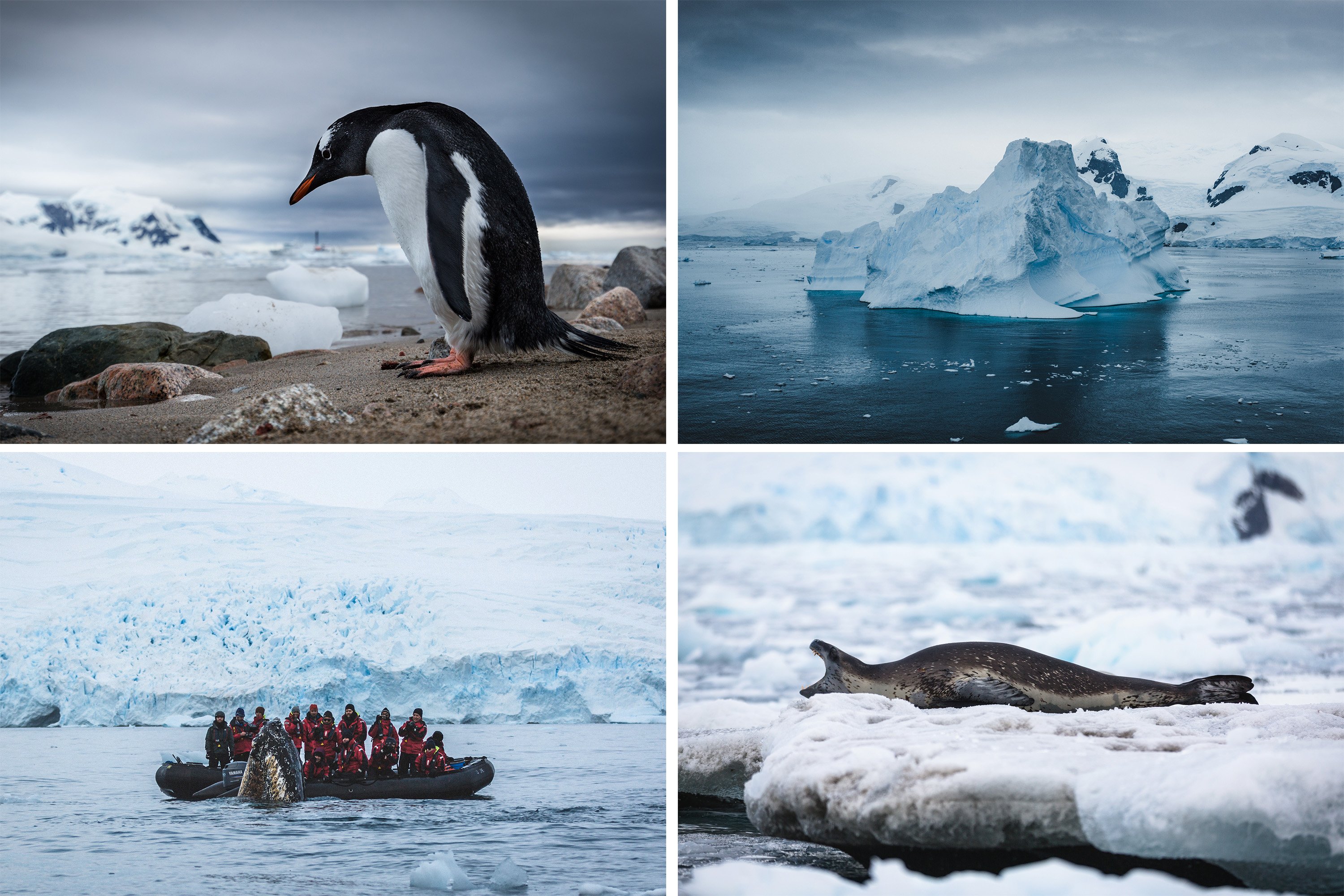
It is 4:30 am. I cannot sleep. My hands still feel cold to the core from staying out on the water after sunset, much longer than I should have stayed out. This is because once the sun goes down in Antarctica, the temperatures drop to below zero. Without the protection of the sun, all the layers upon layers of thermals, fleece and down feel like they are no longer there. As a sun-loving Australian unaccustomed to cooler climates, I feel exposed and vulnerable, as if someone has stripped me of my skin.
So, at the prettiest time of day, when the pink skies of March start turning to a greyish purple, this is when the One Ocean expedition guides begin to steer their black zodiac boats back to the mother ship. It is a time when you take a moment to be silent and to appreciate the sheer beauty of the wild and remote places of Earth that are still relatively untouched by humans, and it is also the time when you realise everything below 60 degrees south has intensified itself in terms of its attractiveness in your adventurer-filled eyes.
You realise that our bodies are just not built to withstand the harsh weather of the south for ‘too’ long. Yet, would you believe the harsh conditions of the bottom of the world become a highlight of your adventures?
It is these fleeting moments, spent in the cold land of white and beneath late afternoon skies smothered in brushstrokes of pastel hues, which are precious memories. We capture them in our minds, before we are forced to retreat and leave this untameable place the way we found it.
Those few humans, who have been lured to this part of the world, know that facing the unforgiving Antarctic chill is a big part of the adventure, and that every foreigner who dares to challenge their limits and who enters the alien Antarctic world, will be pleasantly rewarded - but, only during daylight.
At sunset, it is the time to withdraw. This is the time of day it all ends. It is time to find shelter, and yearn for the next day to begin.
However, yesterday was different.
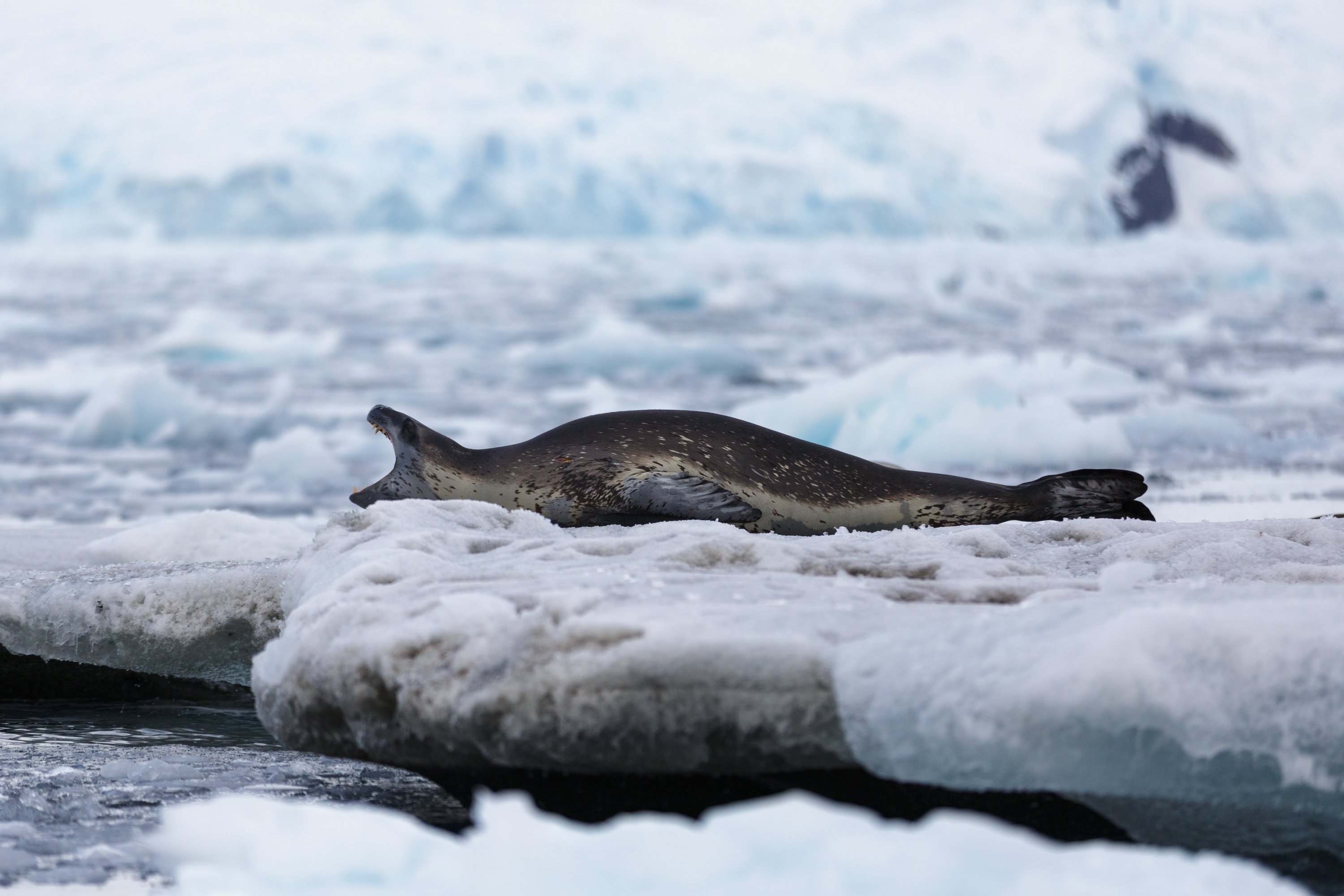
The presence of the sun was slipping away, but no one was prepared to go back to ship. Our fingers and toes were turning into icicles, but we pleaded with our guide to stay. We were cruising around a placed called Penguin Island. This was our last chance to see whales. While we had seen many beautiful creatures, such as chinstrap penguins, a leopard seal and a crabeater seal that afternoon, we had not seen any humpback whales - the most elusive yet magical creature I wanted to see. I say ‘magical’, because it is incredible to think that these creatures were nearly hunted to extinction, yet defied the odds. About 2 million whales of a variety of species were killed over the past century in Antarctica, until a global movement grew which led to nations around the world leaving them alone. This has allowed nature to replenish herself down here; to reclaim these waters these giants once owned.
Earlier on this day, as our zodiac sat peacefully and the passengers drank hot chocolate and Baileys, enjoying the glacial landscape, I had sat there anxiously scanning the calm waters for the sign of a whale, clutching my camera tightly. Although I was here to see whales, I knew perhaps not everyone shared my ambitions. Meanwhile, I knew my co-director, James Sherwood, was somewhere out there with Associate Professor Ari Friedlaender from Oregon State University and his whale research team, on another boat, filming sequences of researchers taking biopsies and drone vision of whales. James was in a good position - the researchers had the nose to find these elusive creatures. I knew that they would find them, while I was here, looking at a striking sculpture of blue ice, which was equally as splendid, but still, it was not a whale.
Since nature in Antarctica is wild and uncontrollable, I had resigned myself to the possibility, that today on our zodiac, we would not find whales. I would have to go back to the ship with nothing, without any new production stills of whales.
I was here on assignment to put together a story about whales for The Map to Paradise (film), and I had built up an epic shot list in my head of the photos and video clips I had hoped James and I would secure. Yet, right now, I was wondering if perhaps I had been too idealistic with my dreams. Perhaps, my wish list would just not come true today?
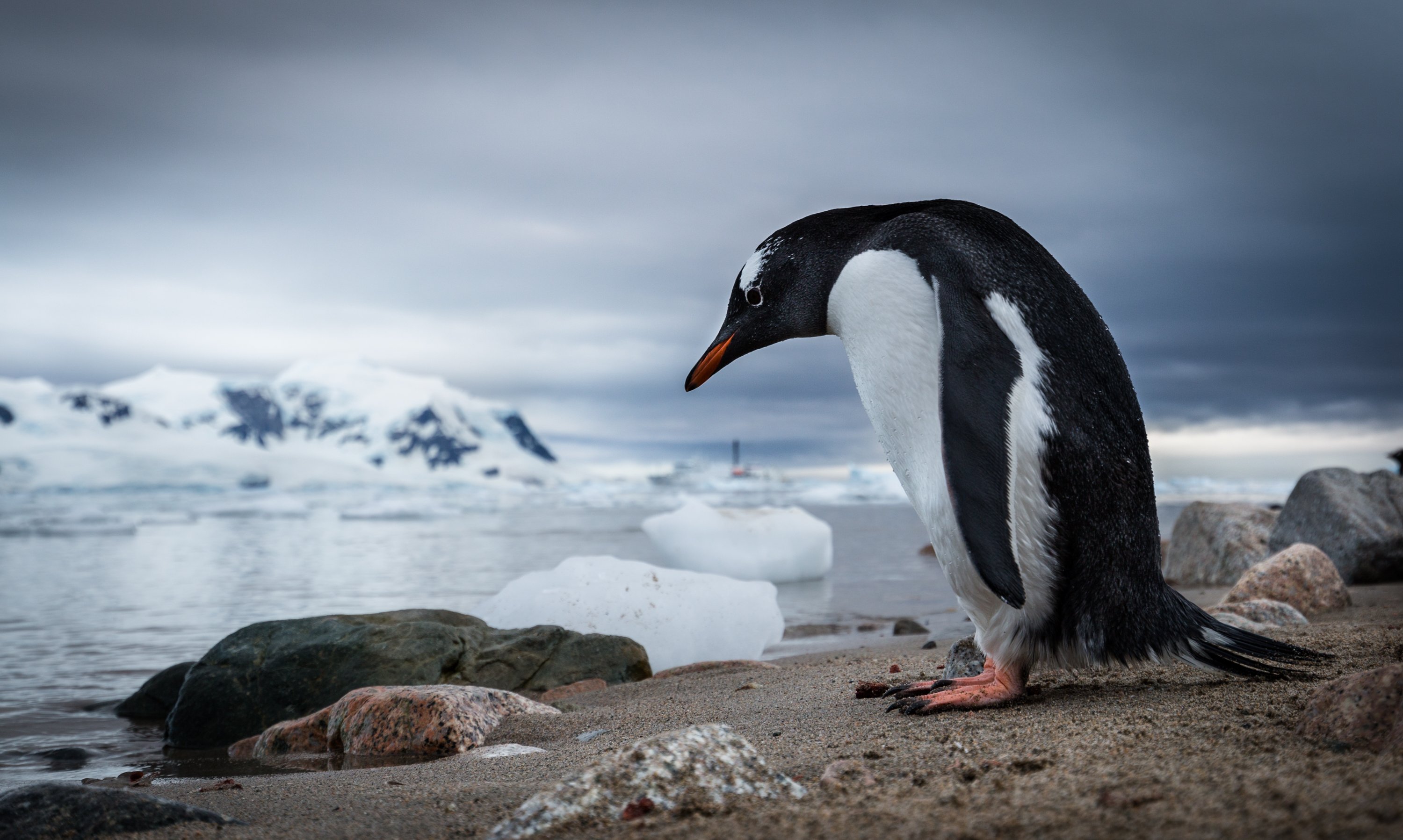
However, I had not yet given up totally on that dream. I could not help but to constantly scan the sea for black flashes of tail flukes or the misty spray of a whale spurt.
I was obsessed with the task. I had my eyes locked onto the liquid landscape like a hawk.
Soon I noticed that there were other zodiacs in the distance surrounded by whales. I wondered if everyone on my zodiac longed to be over there where the action was. We had all travelled from far-off lands for this moment, and we wanted to hang onto that last moment, that last opportunity to encounter a humpback swimming through calm glassy grey waters surrounded by brash ice, glaciers and mountains.
This was our last destination where the humpbacks would be accessible, before we had to return home.
At first, our guide was hesitant to go to the whales, because she wanted to ensure that our safety was put first, so she said we could only head towards the whales if we were not feeling cold. I rubbed and moved my stiff fingers rhythmically trying to keep the blood flowing, because I had to say ‘yes.’ Saying ‘Yes’ was imperative. I still did not have the production stills that I was looking for. I just hoped that no one else on our vessel of twelve people would say that they are cold.
Surely, I thought, the odds were stacked against me, someone would say ‘no,’ and then I would have to climb the gangway back to the ship with nothing, aborting my mission, and I would have to accept that.
I hoped that this would not be my fate.
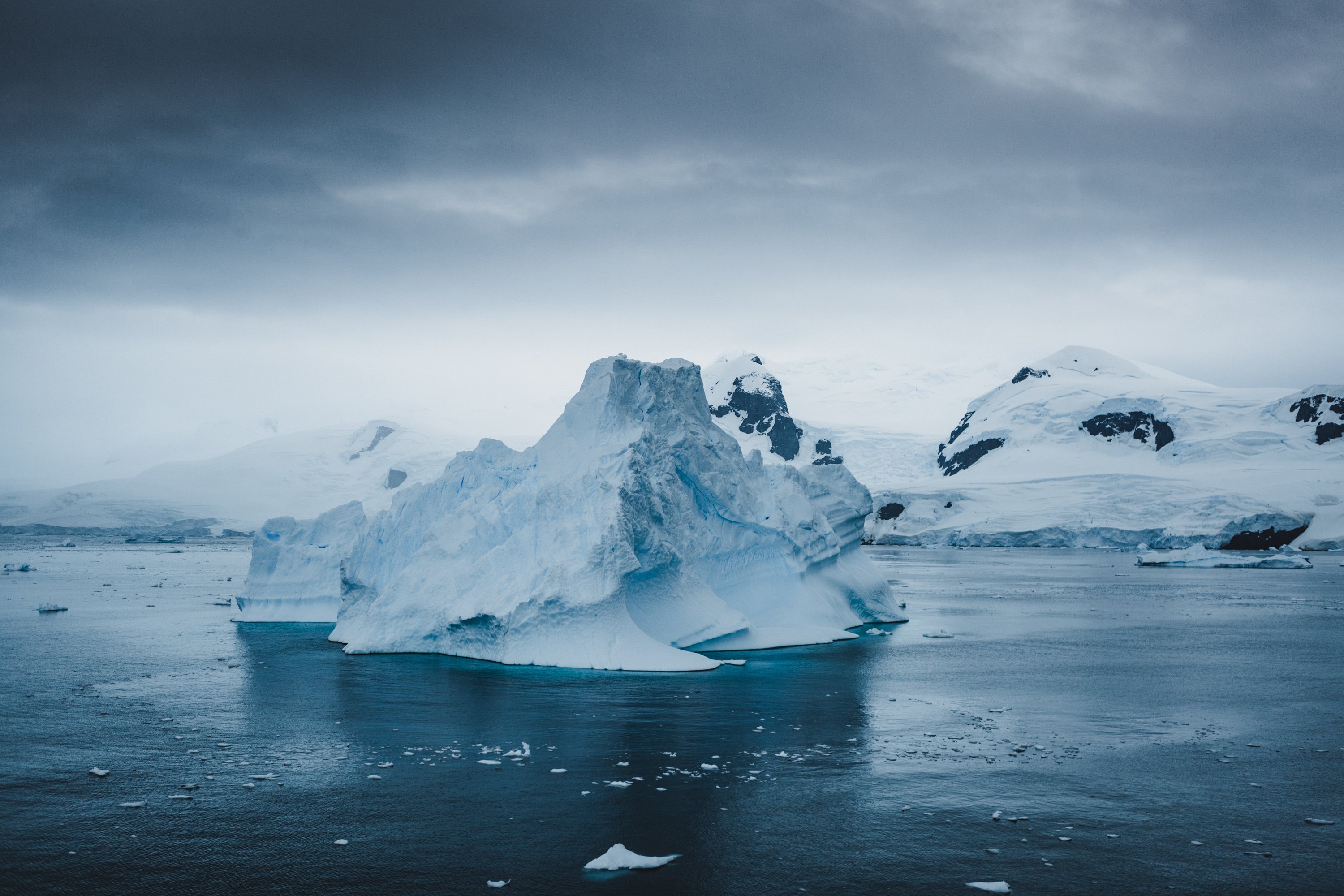
I looked around anxiously at my fellow passengers. My heart was racing, but I soon relaxed when I saw their wishful faces; their concentration on the distant whale activity showed me they had the same dream as I did.
Our zodiac passengers shared the same dream! That was good news. I could feel the energy in the air. It was exhilarating. I could feel it. Today would turn out to be a marvellous day. Together, we looked on with excited anticipation knowing these moments in Antarctica would burn into our memories as the best experiences of our lives. Onwards we travelled. Closer and closer our zodiac gently carved through the flat ocean, and we stealthily crept as near to the whales, as close as we were allowed to go, and then our guide switched the engine off. And, so here, near Penguin Island at the end of the world, would be the most wild encounter of our lives.
I knew instantly that this scene etched before me would become a pivotal moment in The Map to Paradise documentary that I was filming. Here, the most extraordinary event was unfolding, a very rare sight: there was a humpback that was playing gently with a number of zodiac boats. It had approached the boats, moving carefully and strategically among the crowds of happy, cheering passengers holding onto their go pro sticks and cameras tightly as the whale sporadically displayed its head, fluke and belly, and it rolled around, splashing about, as if it were a playful puppy dog, displaying a dance of friendship (or possibly courtship, who knows). Our giant friend would rub a boat with its side, and then wave its flipper up and down, before doing another graceful roll.
Later on, Associate Professor Ari Friedlaender would tell us that he has seen special encounters like this when there is ‘one’ boat, but never with so many boats, with so many people. We were witnessing something quite unique. You could just feel it.
This whale (yet to be named) might possibly become famous with so many global fans filming and snapping happy selfie photographs.
Although our boat was the furtherest away, the whale eventually came up briefly to say ‘hello’ and spurt, (spraying us with a fishy odour that had to be tolerated). It then lifted its curious head up to have a look, before it submerged its great body and went back to play with its most favourite zodiac friends. While I longed to be a passenger on one of the whale's ‘favourites’, it was probably best that I was further away, since I was carrying a long lens and so required some distance to make the focal length work.
My role that day would be to document these events from a distant perspective through production stills, while further away, on the other side of the activity, I could see James with his camera and rig diligently filming the researchers' reactions on another boat, while researcher Charles Litton had launched a drone, which buzzed like a mosquito above our heads. The aerial perspective was bound to be the best. I imagined the shots that were being captured above our heads; I was sure you could see the full body of the whale, caressing the bottom of a zodiac.
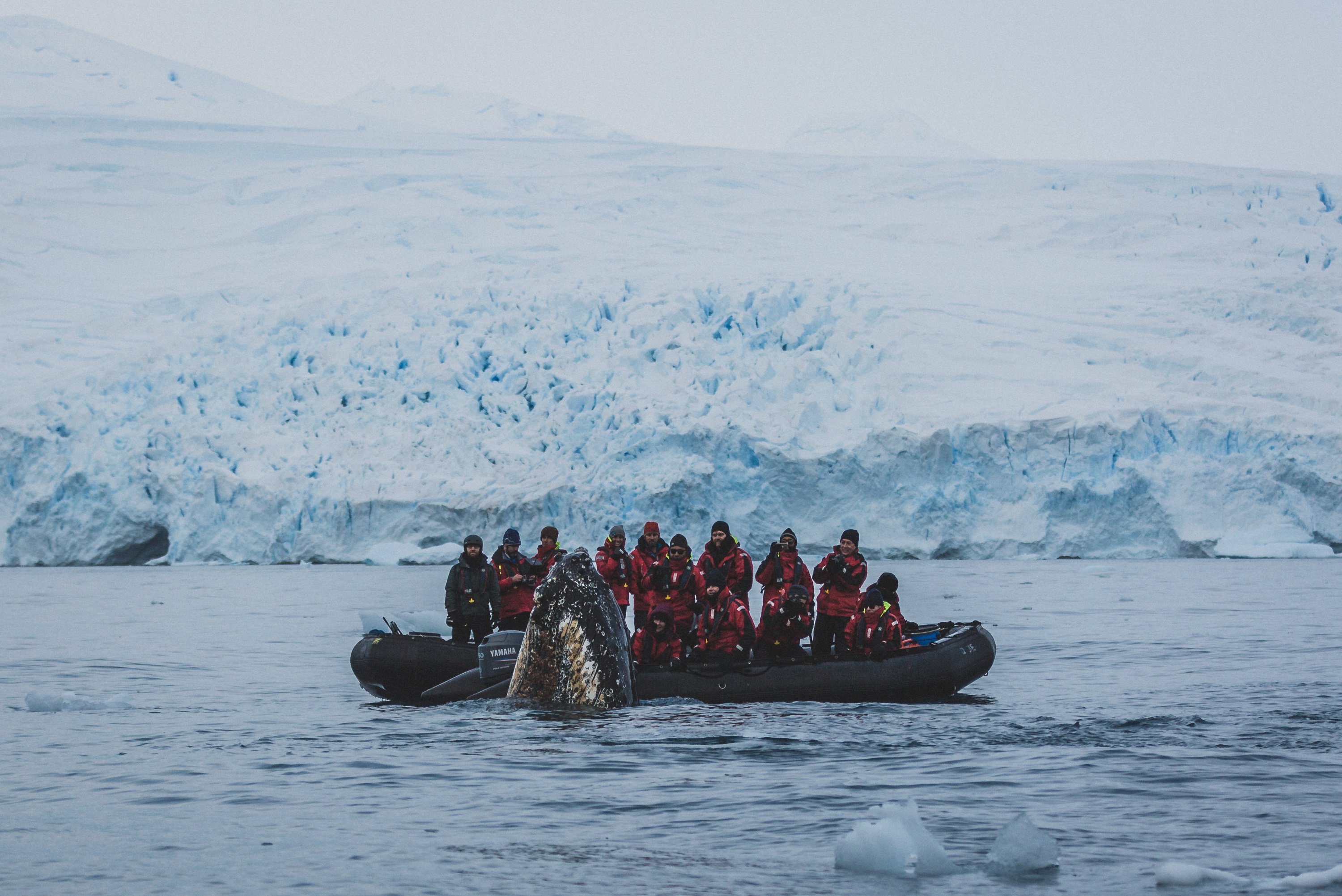
The whole scene was being filmed and photographed from every possible angle.
This whale was at the peak of its fame! And it was relishing the moment. It showed no sign of leaving. I remember thinking this encounter will make travelling to Antarctica the most desired dream to have of all nature-seeking adventurers who see these images.
I was waiting for this glorious moment to end, but it kept going.
This scene was already the most action-packed natural wildlife encounter I had ever seen, yet something even more extraordinary occurred.
As I looked on through the lens of the camera, (mesmerised by this encounter which I think we all wished might never end), soon another whale came and joined the first, following it around, weaving from boat to boat. And, then another came and another. We could see their black humps had filled the sea around us, and the whales were grunting and calling, singing out as the night turned closer to plum grey. While the other humpback whales were more reserved, keeping their distance, they were clearly inquisitive. Perhaps, it was the happy call of humans that had lured them there, (or so I would like to believe), or perhaps the whales had mistaken the zodiacs for lovers. Either way, I would like to believe that here we were, two very distant worlds and species colliding, expressing an interaction full of joy. All of us were experiencing the closest possible gesture of peace with nature, a moment where she had chosen to seek us out while we simply stood back and enjoyed the pleasure of watching her be wild and free. The scene that had unfolded before me was utter perfection, enabling me to wish away the cold and to also delay that unnerving chill and dull ache in my hands, which I would feel for the next twelve or so hours - even after a hot shower.
But, oh, how it was worth it. Waking up at 4:30am and recording what I saw the day before with my stiff fingers scribbling away has got me thinking about the power of day and night, and the limits of our ability to conquer the seas. When you are blessed with fortune to live such a moment, you cannot help but desire to see more natural places left untouched to be able to re-wild, just like this.
Danielle
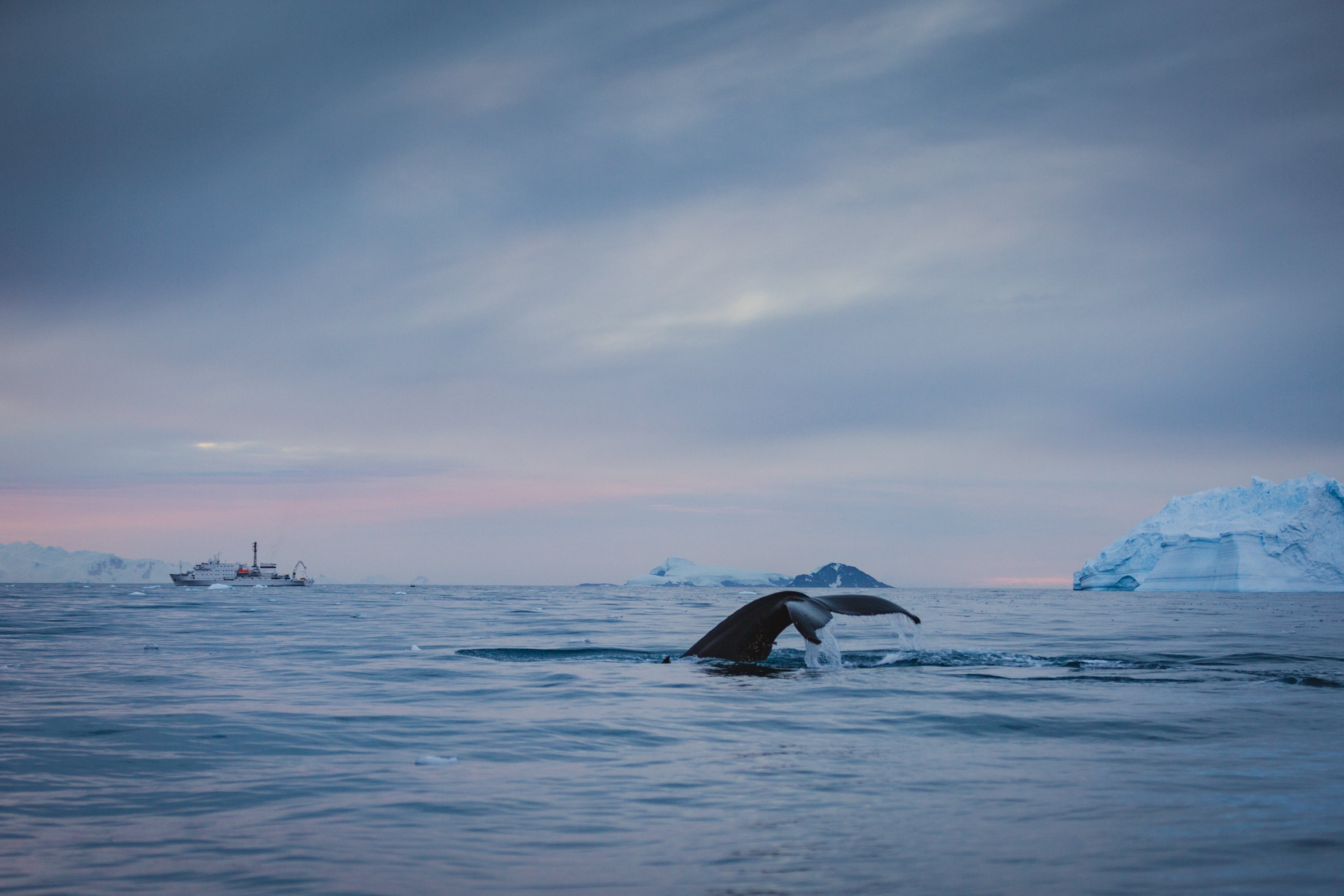
We give a special thanks to One Ocean Expeditions as a Travel Sponsor for The Map to Paradise (film) for making this Antarctic adventure possible. This post was written on the 24th March 2017. Stay tuned for the release of a behind-the-scenes blog video from the perspective of Co-Director James Sherwood and Associate Professor Ari Friedlaender and his research crew while filming this unique experience with the humpback whales.
